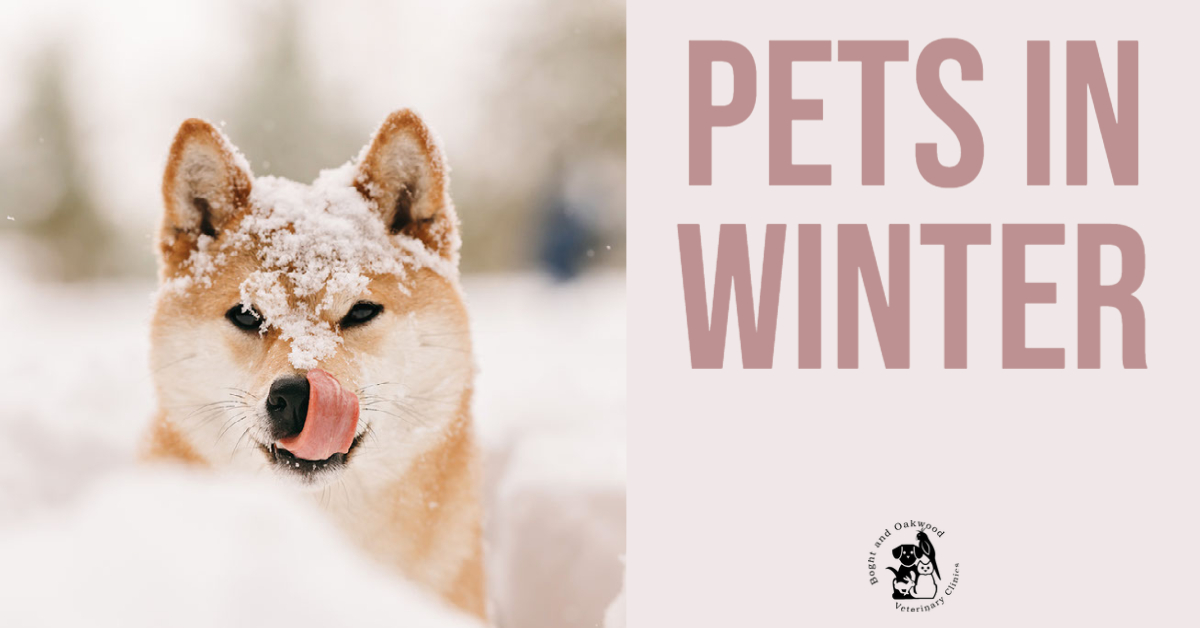
Winter can be an enjoyable time for our pets, especially our dogs! However, just as in people, the cold can impact our pets in negative ways if we aren’t careful!
So what precautions can you take?
Cats in Winter
Let’s start with our cats! First of all, it is recommended to try to keep your cats indoors during the winter months. In some situations, this isn’t always possible! So, if your cat does go outside, make sure they have access to a warm, dry shelter. On that note, several cats have been known to hide in cars- whether it’s on a tire, under the hood, or elsewhere- try to remember to check your vehicle before driving if you have outdoor cats in your area!
The Importance of Hydration
While it is important to keep your pets hydrated during the hot months of summer, hydration during the winter is important as well! To put it simply, good hydration leads to good circulation, which in turn leads to more efficient temperature regulation. Blood is able to reach paws more efficiently, which means warmer paws!
Many animals enjoy eating snow, which can help hydration, however it is important that your pet have access to fresh, clean water at all times. If your pet does enjoy eating snow, use caution and make sure they aren’t getting into salty, or otherwise “dirty” snow.
Dogs in Winter
Many dogs LOVE the snow. Breeds such as huskies, malamutes, and several others can happily sit in the snow all day long, they were made for the snow, and tend to thrive in it! On the other paw, several breeds don’t do well in the cold. Even if they do enjoy the snow and cold, many short-haired breeds may need some assistance staying warm, such as a coat or sweater. Some dogs even tend to have more sensitive paws, and may benefit from dog booties.
Just as in people, it’s important to use caution to avoid hypothermia, frostbite, and other cold-induced conditions.
Winter Walks
When walking your dog, do the best you can to avoid salty areas. Most salt and ice melt is not only dangerous if ingested, but can hurt the paws as well. There is pet friendly ice melt available at many pet stores and supermarkets. While using caution with salty areas is necessary, it is just as important to use caution and be aware of icy areas.
Try to check your dogs’ paws regularly, especially after winter walks, for cuts, scrapes, and other injuries. And don’t forget to look between the toes! Big dogs, especially giant breeds such as Great Danes and Mastiffs, tend to have “snow smuggling paws,” meaning that snow gets stuck between the toes and paw pads, packs together into small snowballs, and of course, end up being smuggled into the house- which is not ideal!
If you regularly walk or hike with your dog at night or during hunting seasons, it’s always a good idea to dress your dog in bright colors, reflective material, or both! This way they will be highly visible, and will be spotted easier. This is especially important if your dog goes off-leash!
Colder months and snowy weather does not have to mean staying cooped up inside. As long as proper precautions are taken, and everybody is staying safe – enjoying the snowy days can be a great way to bond with your dog.
Although, taking the time for cozy winter cuddles with your pet inside is just as important, and most cats prefer it that way!

